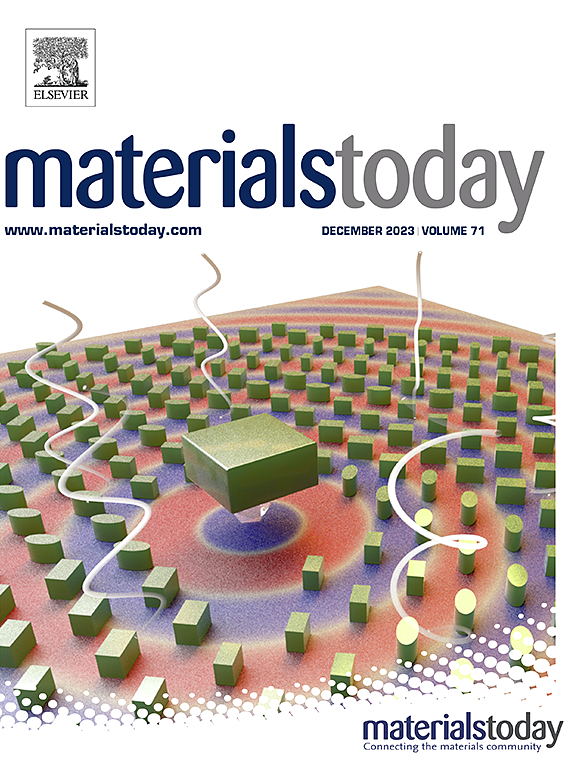An ultrasound-responsive hydrogel with piezoelectric-enhanced electrokinetic effect accelerates neurovascular regeneration for diabetic wound healing
IF 21.1
1区 材料科学
Q1 MATERIALS SCIENCE, MULTIDISCIPLINARY
引用次数: 0
Abstract
Diabetic wound healing is hindered by the critical effects of poor local vascularization, peripheral neuropathy, and bacterial infection, which remains a formidable challenge. Available wound dressings suffer from limited therapeutic efficacy owing to the inadequate addressing of neurovascular lesions. Herein, an ultrasound-responsive composite hydrogel composed of a gelatin/polyvinyl alcohol (PVA) interpenetrating polymer network doped with piezoelectric (K,Na)NbO3 (KNN) nanocrystals and reduced graphene oxide was rationally designed to realize sonoelectric conversion to accelerate diabetic wound healing by facilitating local neurovascular regeneration. The composite hydrogels present exceptional self-healing, skin-adhesive, and conductive properties. More encouragingly, this hydrogel is endowed with excellent sonoelectric conversion performance by piezoelectric-enhanced electrokinetic effect under ultrasound irradiation. The results in vitro and in vivo demonstrate that the composite hydrogel combined with ultrasound irradiation can enhance the angiogenesis of endothelial cells, upregulate the neurotrophic effects of Schwann cells to support neurite growth, and inhibit bacterial activities, resulting in significant local angiogenesis and nerve regeneration in diabetic wounds. This strategy offers an efficacious approach and leads the development of electroactive biomaterials for diabetic wound treatment.

求助全文
约1分钟内获得全文
求助全文
来源期刊

Materials Today
工程技术-材料科学:综合
CiteScore
36.30
自引率
1.20%
发文量
237
审稿时长
23 days
期刊介绍:
Materials Today is the leading journal in the Materials Today family, focusing on the latest and most impactful work in the materials science community. With a reputation for excellence in news and reviews, the journal has now expanded its coverage to include original research and aims to be at the forefront of the field.
We welcome comprehensive articles, short communications, and review articles from established leaders in the rapidly evolving fields of materials science and related disciplines. We strive to provide authors with rigorous peer review, fast publication, and maximum exposure for their work. While we only accept the most significant manuscripts, our speedy evaluation process ensures that there are no unnecessary publication delays.
 求助内容:
求助内容: 应助结果提醒方式:
应助结果提醒方式:


